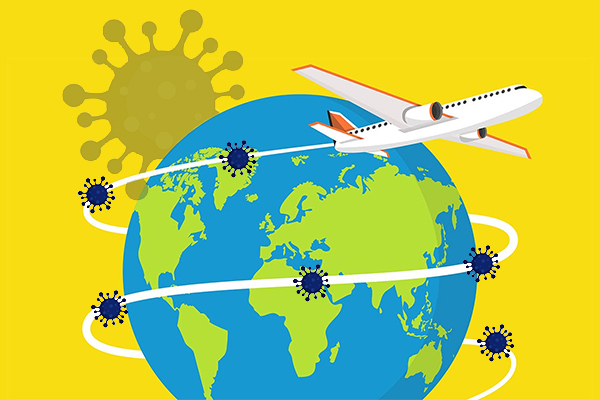Aviation post-COVID – Untangling the knots
With countries across the world imposing restrictions on the movement of people within their borders to curb the transmission of the virus, international air travel has taken a backseat. India is expected to be among the worst hit markets in the Asia Pacific region, be it passenger demand, revenue losses or employment.

As per an estimate by the International Air Transport Association (IATA), there is likely to be a drop of about US$ 314 billion in global airline passenger revenues in 2020. The forecast, further notes that airlines in Asia Pacific region will see the steepest drop in revenues to the tune of about US$ 113 billion in 2020 compared to 2019 (-US$ 88 billion). The region will also witness a 50% decline in passenger demand in 2020 compared to 2019 (-37%).
International yoy comparison shows a steep decline in revenue passenger kilometres* (RPKs) during the months of April 2020 & May 2020. Research from IATA shows that international RPKs declined by 98.3% year-on-year in May’20, barely changing from -98.4% in the previous month. Further, seasonally adjusted passenger volumes lifted slightly in the Asia Pacific region since China and South Korea resumed some of their international flight operations in May’20.
With gradual opening up of borders by some countries and the creation of travel ‘bubbles’ or ‘corridors’, the association is hopeful that there is likely to be further gradual improvement in international RPKs over the subsequent months.
*A revenue passenger-kilometre is flown when a revenue passenger is carried one kilometre.
Overall, the passenger sentiment with respect to air travel remains subdued. The survey conducted in June ’20 reveals that travelers have become more cautious about air travel than in April ’20. This is reflected in the fact that about 45% of respondents stated that they were intending to fly within two months from the time the pandemic is contained. This was a drop from the 64% share recorded three months earlier.
The study estimates that air travel demand will start a gradual recovery in the subsequent two quarters in 2020. Restoring consumer confidence will be the key to restoring passenger traffic in the aviation industry.
IATA estimates that air travel will return to 2019 levels only in 2023.
COVID-19 has significantly reduced the passenger demand in Asia Pacific in 2020, based on data compiled by IATA. Thailand has registered a 52% year-on-year (yoy) decline in passenger demand in 2020 owing to the pandemic. The corresponding figures for Australia, India, Indonesia, Japan, Malaysia, New Zealand and Singapore for the period under study are: -51%, -47%, -49%, -50%, -51%, -50% and -48% respectively.
The pandemic will have far reaching effects on the financial health of the aviation industry in Asia-Pacific region. Out of the eight countries depicted above, Japan’s aviation industry will be the hardest hit (approx. US$ 22.62 million), as per IATA estimates. The other two countries whose aviation industries will suffer significantly revenue losses include Australia (approx. US$ 14.25 million) & India (approx. US$ -11.22 million). Conrad Clifford, IATA’s Regional Vice President, Asia-Pacific has called for measures such as direct financial support, loans & tax relief to help airlines avert the liquidity crisis.
According to estimates, every airline job supports another 24 in the travel and tourism value chain. Further, 11.2 million jobs in Asia-Pacific are at risk, including those that are dependent on the aviation industry, like travel and tourism. India is expected to be hardest hit, followed by Indonesia and Thailand when it comes to employment.
Passenger traffic projections for India

The table presents an estimate on FY 2021 projections for passenger traffic in India by Center for Asia Pacific Aviation. CAPA has revised downward its traffic forecast for FY 2021 to 55-70 million domestic and 20-27 million international passengers.
“The combination of the monsoon quarter, fragile economic conditions and lingering passenger fears about the safety of travel, could prove to be a devastating cocktail for airlines. Weak underlying demand may be further exacerbated by potential processes and protocols that could negatively impact the passenger experience,” it states. These include factors such as the need to check-in much earlier due to increased passenger facilitation requirements; health screenings at airports and onboard aircraft; lesser facilities at airports and so forth.
Indigo Airlines has announced on July 20 that it will be compelled to let go of around 10% of its workforce. However, rising above the challenges of a crisis is nothing new to airlines and the broader aviation and travel sector. In a bid to support the industry, CAPA suggests a string of measures. Airlines, for example, will need to quickly define their operations to the new traffic estimates. They may need to enhance liquidity in the event of a prolonged crisis. It also recommends that a National Civil Aviation Policy 2.0 to be designed to support sectoral recovery.













Leave a comment